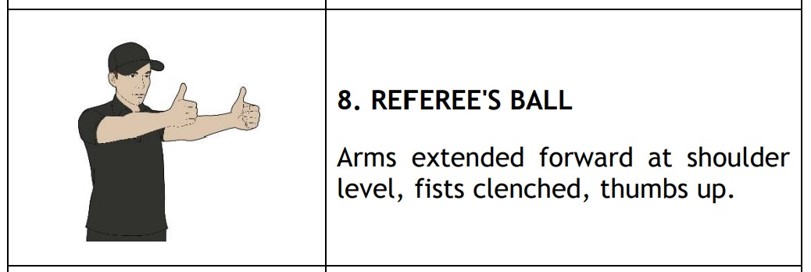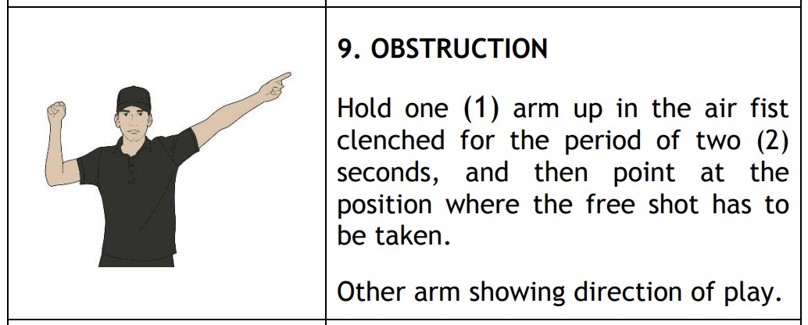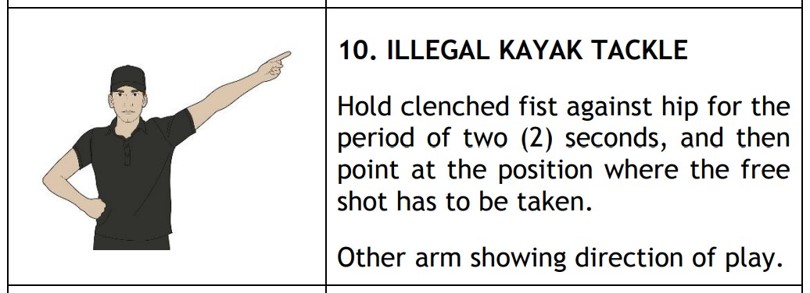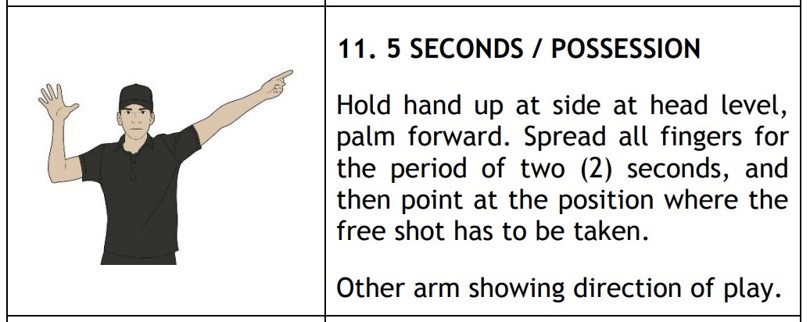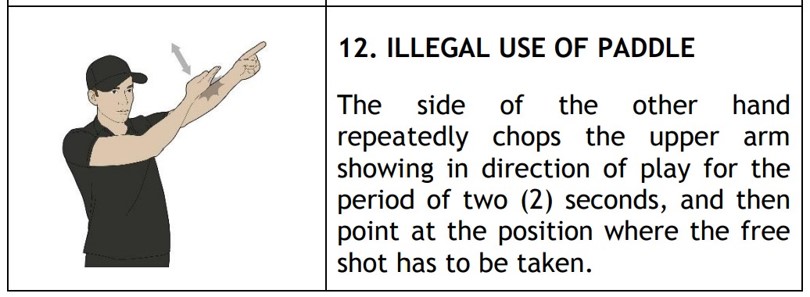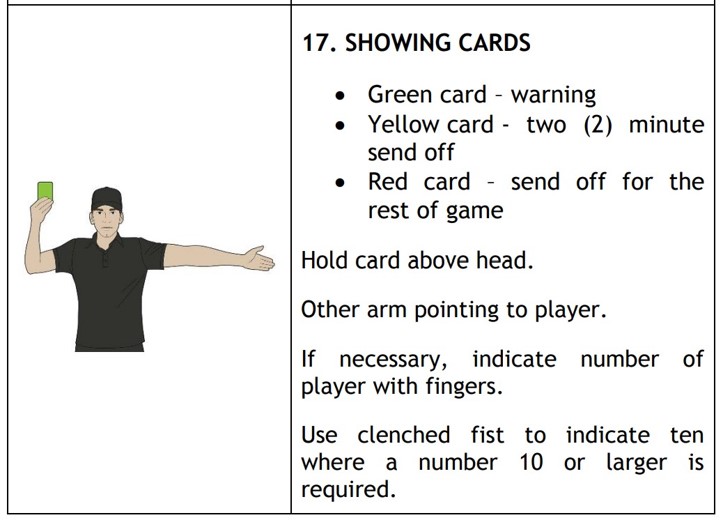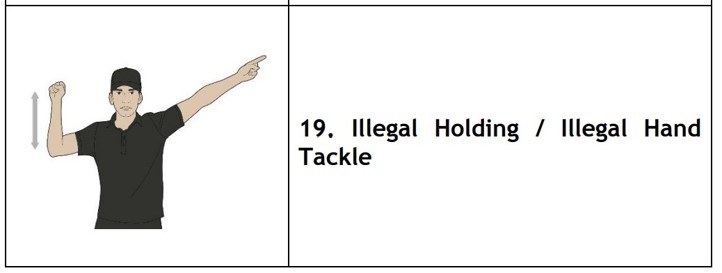Canoe Polo is a five person team sport with up to a maximum of 3 substitutes. The aim is to score more goals than the other team in goals that are suspended to meters above the water level. Games last up to 20 minutes, two 10 minute halves are played at maximum. Players are required to wear some specifically designed kit to ensure their safety whilst playing (more on this later).
The Pitch
The pitch is typically 35m x 23m (for international tournaments) however this can change to allow playing in smaller pools for more local tournaments (like Jubilee pool for example) The pitch is marked out with floating ropes and if the ball touches the rope or goes over it, it is then out of play
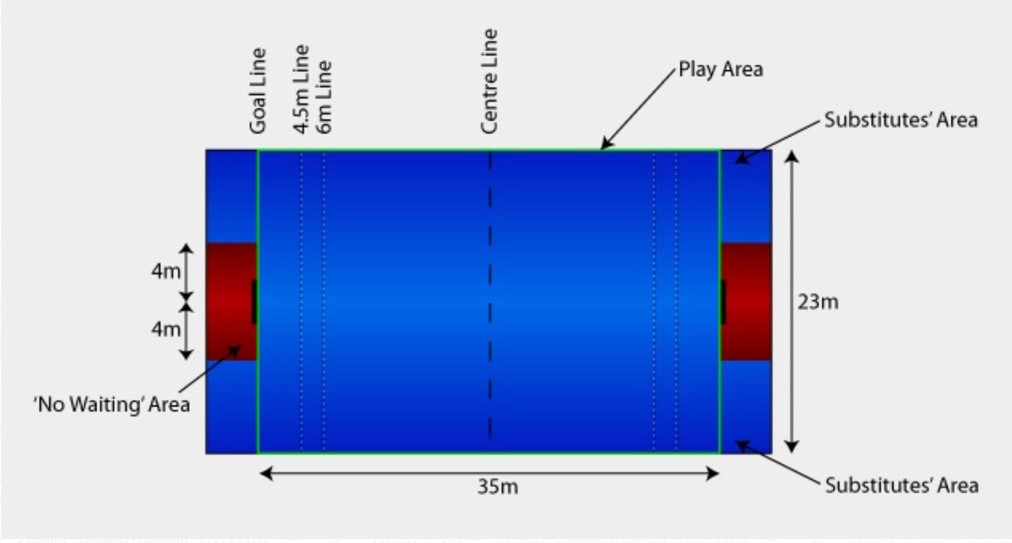
Referees & Officials
There are typically two people who are responsible for refereeing the game, and they stand opposite each other on either side of the pitch. They are responsible for decision making regarding fouls and their decision is final (DO NOT ARGUE)
Alongside the referees there is what is know as the “table”. The people who run the table are responsible for timekeeping, keeping a record of goal scorers and players who have been carded etc.
At higher levels the table is also responsible for running the shot clock, more explained about this.
Altogether there can be up to 8 officials, however this is only likely at international tournaments.
Kit
All players are required to wear sport specific kit:
- Boat
- Canoe Polo Ball
- Paddle
- Spray Deck
- Helmet
- Buoyancy Aid
- Rash Vest
- Swim Shorts (or Something similar)
This kit is required to ensure the safety of all the players to try to avoid serious injury.
General Game Rules
Goals are suspended 2 metres above the water. They are 1.5 metres x 1 metre, they each have a net, and red stripes on the poles to make them easier to see.
Substitutes wait in their own substitute's area. Players on the pitch can paddle round the back of the goal if they want to.
The two referees give signals to show you what is happening. Generally, one arm points in the direction of play, and the other tells you about what the offence was.
There are two types of 'free throw’. These are indirect (a free throw) or direct (a free shot) depending on the offence.
After any pause in the game (ball going out of play/ foul committed/goal scored) the player must present the ball above their head and wait for the referees whistle before commencing the game.
Players have only five seconds in possession of the ball to keep the game moving quickly.
Disciplinaries
There are two typical sanctions (punishments) that are given:
- Free Shot
- Free Throw
The referee can also give out a number of cards depending on the severity of fouls which all have there own meaning:
- Green Card: Warning. Green cards are given for repeated minor offences, unnecessary verbal communication with the referee and unsporting behaviour.
- Yellow Card (Power Play): Player is sent off for a maximum period of 2 minutes. Card given if player commits a deliberate or dangerous foul play. If the opposing team scores within the two minutes, the player given the card is allowed to re enter the game.
- Yellow Card (GOAL Penalty Shot): Given to a player who commits a foul on a player who is in the act of shooting. Player who receives the card will be sent off for 2 minutes.
- Red Card: Player is sent off for the rest of the match. A red card is given for serious deliberate or dangerous foul play, or for anything that is deliberately to harm another player. They are also awarded for if an incident of major foul play has, in the referees opinion, a serious effect of the game.
Start of Game
At the start of the game, all players will line up along their goal line ensuring that part of their boat is touching the back rope (side of pool).
Once the referees are happy that this is the case, one referee will blow his whistle and throw the ball into the middle of the pitch.
1 player from each team must sprint for the ball at the start of the game, any player within a 3 metre radius before either player has clear possession of the ball has caused an infringement. The penalty for this is a free throw.
Pitch Boundaries
If the ball touches the side line, it is out of play. Side lines move with the ropes. A free throw is given to the team that didn't have possession / not last to touch the ball, from the place the ball went out. You must take the throw from where the ball left the pitch.
If the ball touches the goal line, it is also out of play. The goal lines move with the plane of the face of the goal. If the defending team was last to touch the ball, a free throw from either corner is given to the attacking team. If the attacking team was last to touch the ball, then a free throw from the goal line is given to the defending team. The throw can be taken from anywhere along the goal line.
Scoring
The whole ball must cross the face of the goal for a goal to count.
After a goal is scored the ball must be presented by the attacking team on the centre line.
The attacking team cannot cross the centre line until the referee has blown their whistle to restart play.
Play can be restarted when at least 3 defending players are back in their half, or when 10 seconds have elapsed.
Substitutions
Substitutions can take place at any time during the game. A player may be substituted once they and all their kit have completely left the pitch at their own goal line.
The only exception to this rule is when substituting a capsized player who has left their kayak - this player may be substituted at the next break in play as long as all their kit has been removed from the pitch.
Play does not stop for a capsized player unless they are causing an obstruction or are in a dangerous position.
An illegal substitution is penalised with a yellow card - the team play with one less player for the duration of the yellow card.
Paddle Fouls
Easily summarised - if it is dangerous or unfair on another player, it is illegal. A free shot is given to the victim's team.
The following things are illegal:
- Touching an opponent's body with your paddle.
- Playing the ball when it is within arm's reach of an opponent and they are trying to reach it.
- Putting your paddle within arms reach of an opponent when they have the ball in their hands (goalkeepers are excluded from this rule as long as their paddle is not moved and it is not dangerous).
- Pushing off another player's boat with your paddle or restricting another player's movement with your paddle - technically this comes under illegal holding (see below).
- Playing an opponent's paddle with your own.
- Throwing your paddle.
Possession Infringements
A player is in possession when:
- They have the ball in their hands (even if they are capsized).
- They can reach a ball lying on the water with their hands (unless they are capsized).
- They are balancing the ball on their paddle.
A player has lost possession when the ball travels one metre horizontally from their hand, or they pass it to another player.
Illegal possession is penalised by a free shot (except when someone forgets to present the ball - this is a free throw). Illegal possession is when:
- A player is in sole possession for longer than five seconds.
- A player moves their kayak with paddles or their hands when the ball is resting on their deck.
- A player fails to present the ball above their head when taking a free throw or free shot.
The five second rule does not apply to two players in joint possession.
Hand Tackle Infringements
You can hand tackle a player in possession of the ball by pushing them with one hand on their back, upper arm or side.
This is illegal when the tackle doesn't make contact with the back, upper arm or side, or when the tackle endangers the player. (Pushing a player against a boat or poolside is dangerous; pushing a player against a floating side/goal line is not.)
Kayak Tackle Infringements
A kayak tackle is moving your kayak against an opponents kayak to win possession of the ball.
Kayak tackles are illegal when:
- Contacting the body of the opposing player (not including their arms)
- Continuing paddling into an opponents spray deck after a legal tackle.
- Any tackle which is by momentary contact and between 80 and 100 degrees to the opponents kayak - i.e. hitting the opponent's kayak hard in the side.
- Tackling a player who is not within 3 metres of the ball.
- Tackling a player who is not competing for the ball
- Moving or unbalancing a goalkeeper.
Jostling
Jostling consists of moving your kayak within the 6 metre area to gain position (when not trying to get the ball).
Jostles are illegal when:
- Moving a player by more than a metre (in one movement) whilst jostling
- Jostling a player outside of the 6m area (including behind the goal)
- The jostle is hard like a kayak tackle.
Obstruction
Obstruction is technically described as illegal screening. Obstruction is where a player actively impedes the movement of another player. Actively means that the player committing the foul is making paddle strokes or that their kayak is moving. Obstruction does not apply when both players are competing for the ball, they are jostling within the 6 metre area or one player is in possession of the ball. The victim's team is awarded a free shot.
Illegal screens are often poorly refereed, mainly due to a misunderstanding of what is really quite a simple rule. The easiest way to look at it is this: - if you were a player and someone purposely got in your way when you were going somewhere, you wouldn't be happy, right? This is obstruction. For a more thorough description of Illegal screen, see the full rules.
Holding/Leaning Infringements
These offences are punishable by a free shot. This falls into three areas:
- You are not allowed to impede/hold on to a player with your body or kit.
- You are not allowed to propel yourself using another player, their kit or the playing area equipment (including the pool sides or floating ropes, usually referred to as 'pushing off the side/boat’).
- You are not allowed to use another player, their kit or the playing area equipment for support (generally known as 'leaning').
Goalkeeper Fouls
Goalkeepers have special privileges. A goalkeeper is defined as the defender most directly under the goal in a position to defend it with their paddle. The goalkeeper must be facing onto the pitch. Note that a player cannot be defined as the goalkeeper if their own team is in possession on the ball - if their own team has the ball they are treated like any other player on the pitch. A 'foul on the keeper' occurs when:
- An attacker moves or unbalances a goalkeeper with their kayak or body.
- An attacker pushes a defender onto the goalkeeper, thereby moving the goalkeeper. This is not illegal if the defender has reasonable time to prevent this contact.
- An attacker impedes a defender from taking up a position as a goalkeeper.
If attackers are pushed on to the goalkeeper by defenders, and they do not have a chance to prevent the contact, there is no foul.
If any of these offences are committed, the goalkeeper receives a free shot.
Unsporting Behaviour
If a referee deems the behaviour of any player unsporting, they may penalise that player with a green card (or worse if sufficiently unsporting or dangerous). Examples of unsporting behaviour are:
- Committing an infringement during a break in play.
- Stopping a capsized player from righting themselves (they must get their head and both shoulders above water before they can be tackled again).
- Interfering with another player's equipment including moving it away from them.
- Deliberately delaying play (e.g. throwing the ball away).
- Dissent, retaliation or foul language.
Advantage
A referee may decide to play advantage if a team would directly benefit from play continuing after a foul. This can only occur if neither referee has blown his whistle. The referee can still take action against an infringing player at the next break of play.
Referees should also signal play on if players mistakenly believe there has been an offence.
Referees Ball
A referee's ball is given if two players are in joint possession for more than five seconds, or if play is stopped through no fault of either team when neither team is in possession.
One player from each team faces the side of the pool, one metre apart, with their paddles in the water not between the kayaks and their hands on their decks. No other player is permitted within three metres of the place where the ball will enter the water.
The referee throws the ball between the players whilst blowing the whistle. Players cannot touch the ball until it hits the water. The referee's ball can be retaken if the ball is thrown unfairly. See the diagram below of a referee's ball.
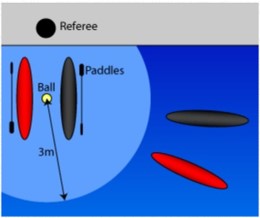
Extre Time/Shoot-Outs
If a result is required, Golden Goal extra time lasting between 3 and 10 minutes each way is played. Any team scoring a goal during this time is deemed the winner.
Golden Goal will continue until there is a result.
Referee Signals
Should any of the above events take place, the referees will blow their whistle and perform one of the below hand signals:







